We know X-ray terminology can be confusing, which is why we made this page of commonly used X-ray terms.
|
Term
|
Description
|
| Anode |
The positive terminal inside an X-ray tube. This is the destination for the electrons released from the cathode. The interaction between the electron beam and the target material produces X-ray radiation.
|
|
The electron beam inside the tube which is used to bombard the target material to produce X-rays. Increasing the beam current (via the filament current) will increase the flux output of the tube. The electrons move from the cathode to the anode to form the beam.
|
|
|
The negative terminal inside an X-ray tube. Electrons are released from the cathode (often a filament) and accelerated towards a the anode to create the electron beam used to create X-ray radiation.
|
|
|
The angle of the radiation cone that is emitted from the X-ray tube. In X-ray imaging, a wider cone angle will enable a larger field of view.
|
|
|
The source of electrons in an X-ray tube, located in the tube’s cathode. Also referred to simply as the gun.
|
|
|
The potential energy gap between the anode and cathode used to generate X-rays. The anode is always at a higher potential voltage than the cathode.
|
|
|
In filament-based X-ray tubes, this is the current run through the filament in order to generate the electron cloud. Increasing the filament current will increase the beam current non-linearly.
|
|
|
The absolute maximum filament current that can be safely run through the filament without causing damage. Exceeding this value may damage the filament beyond repair.
|
|
|
A filament current value that keeps the filament temperature just below the start of electron emission. This is a setting on the X-ray power supply that can reduce warm-up time in time sensitive applications.
|
|
|
The FOD is the distance between the X-ray source on the tube’s target where the X-rays are generated, and the closest point you can reasonably bring an object to it. This distance is useful in imaging applications. The shorter the FOD, the higher the geometric magnification your system can deliver will be.
|
|
|
The geometric magnification of an imaging system is the amount the image is magnified on the detector surface. It can be calculated by dividing the distance from the source to the detector by the distance from the source to the object being imaged. Typically, the minimum distance from the source to the object being imaged is set by the FOD.
|
|
|
The quantitative term for the loss of definition in an image due to focal spot size (and other geometric factors).
|
|
|
An open X-ray tube is a tube which has a vacuum port built in, allowing field replacements of the anode, cathode, and other subassemblies. This style of tube requires a vacuum pump to operate.
|
|
|
An X-ray tube which is contained in some sort of packaging, often radiation shielded, and with the X-ray tube’s high voltage connection internally made inside the package.
|
|
|
The partially shaded region on the edge of the shadow in an image. A narrower penumbra translates directly to a sharper image focus.
|
|
|
An X-ray tube which is encapsulated in a potting material to aid in dielectric standoff
|
|
|
X-ray tube power is defined as the product of the Excitation Voltage and the Beam Current.
|
|
|
A sealed X-ray tube is an X-ray tube which is permanently sealed at the end of the manufacturing process, with either a glass or metallic seal.
|
|
|
A histogram of the number of X-rays produced on the Y axis, grouped by the X-ray energy (in keV) on the X axis.
|
|
|
The size of the electron beam as it lands on the target. In imaging applications, the spot size has a direct impact on the image resolution it is possible to achieve.
|
|
|
The target metal which the electron beam bombards, creating X-rays. The target material dictates the spectrum the tube will produce.
|
|
|
See beam current
|
|
|
The window is the part of the tube where the useful X-rays are emitted. Be is a commonly used window material owing to the low X-ray attenuation made possible by its low atomic number.
|
|
Are we missing any X-ray terms you’d like to understand better? Email us at support@microxray.com to let us know what else you’d like defined!
PLEASE CONTACT US FOR MORE INFORMATION
We are always happy to help or advise on your specific x-ray requirements—from general to technical questions we are happy to help.




